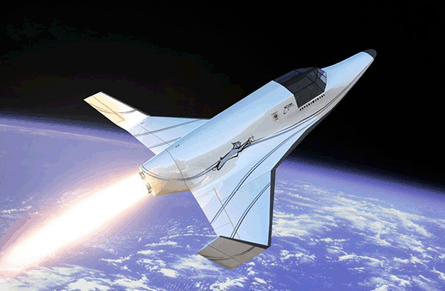Spacecraft designer Xcor has revealed details of a plan to achieve first flight of the Lynx Mk1 later this year and to expand the suborbital market far beyond space tourism.
First flight for the Lynx already has been delayed by two years after XCor discovered a deep stall problem with the original Lynx design. That issue has now been overcome through design changes to the wing, allowing Xcor to begin final assembly within a few weeks.
The first major piece of structure - the fuselage of the Mk1 version -- will be delivered to Xcor the week of 16 January, said Andrew Nelson, chief operating officer and vice president of business development.
Next month, Xcor will tender work packages for building the cockpit pressure vessel and strakes in February, with delivery of the two subassemblies scheduled in April in May, said Khaki Rodway McKee, the Xcor programme manager.
 |
|---|
©Xcor |
Roll-out of the Mk1 is scheduled in July or August from Xcor's hangar in Mojave, California, she said.
Taxi tests are scheduled to begin in October or November, which will be quickly followed by a short hop and finally a brief first flight by the end of the year.
The Lynx Mk1 design will be limited to flight tests. For commercial operations, Xcor will roll-out a Mk2 version about nine months later with two major changes. The Mk2 aeroshell will be made with different material that is easier to maintain in the field. Secondly, the metallic liquid oxygen fuel tanks on the Mk1 will be replaced by a non-flammable composite material, McKee said.
Finally, a Mk3 version of the Lynx is still being designed. It will introduce a 3.4m-long, circular payload pay mounted on top of the fuselage. The added feature will allow the Lynx to launch satellites weighing up to 650kg into low-earth orbit.
Xcor has discovered the Mk3 will require more extensive design changes than first thought. The landing gear must be strengthened and aerodynamic effects may drive the designers to make tweaks to the outer mould line, Nelson said.
As first flight approaches, Xcor also has released a detailed market projection for its new product. Company officials are seeking to break the popular notion that suborbital spaceflight is aimed solely at the space tourism market.
Tourism will account for less than 10% of the roughly $6 billion "addressable market" Xcor anticipates for the Lynx by 2015, when the company envisions a growing fleet launching into space several times a day.
Another $1.1 billion in yearly sales is projected for launching payloads, as well as $1.4 billion in revenue for launching small satellites. Xcor also projects a $2.8 billion market for vehicle and equipment sales to third parties, including the possibility of selling the rocket engine to the United Launch Alliance as a replacement for the Pratt & Whitney RL10.
Source: Flight International






















